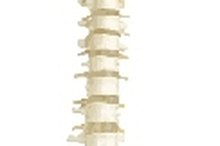Many injuries and medical conditions can cause right arm pain, which ranges from mild to severe depending on the underlying abnormality 2. Most causes fall into three main categories: musculoskeletal ailments, nerve root compression in the neck and peripheral nerve disorders. There are, however, other possible causes that do not fall into these categories. While the various causes are too numerous to discuss each one in detail, some of the more common examples in each category are discussed.
If you are experiencing serious medical symptoms, seek emergency treatment immediately.
Musculoskeletal Ailments
Sprains and Strains
Sprains and strains are among the most common causes of right arm pain, especially in people who are right handed. A sprain involves injury to the ligaments of a joint. Ligaments stabilize joints by holding bones together. Common examples of arm sprains include shoulder separation and elbow dislocation.
A strain involves stretching or tearing of a muscle or tendon. Tendons connect muscles to bone. Common examples of arm strains include rotator cuff tears and a pulled biceps or triceps. Tendinitis, or tendon inflammation, is another common cause of arm pain. This ailment typically develops due to repetitive overuse. Examples include tennis elbow and golfer's elbow.
- Sprains and strains are among the most common causes of right arm pain, especially in people who are right handed.
Bone and Joint Ailments
What Are the Causes of Pain, Numbness & Tingling in the Left Arm?
Learn More
Degenerative arthritis, or osteoarthritis, commonly affects the shoulder but can also involve the elbow. As this osteoarthritis develops due to wear and tear, right-handed people often develop symptoms in the right arm. Bursitis can also affect the shoulder and/or elbow joints, causing pain due to inflammation of fluid-filled sacs called bursae near the joints.
Hairline fractures involving the arm bones don't cause an obvious deformity and usually don't interfere with the ability move the affected arm. Clues include ongoing aching pain along with possible swelling and redness. Bone infections and noncancerous or cancerous tumors are another consideration with aching arm pain.
- Degenerative arthritis, or osteoarthritis, commonly affects the shoulder but can also involve the elbow.
- As this osteoarthritis develops due to wear and tear, right-handed people often develop symptoms in the right arm.
- **
- Sprains and strains are among the most common causes of right arm pain, especially in people who are right handed.
- As this osteoarthritis develops due to wear and tear, right-handed people often develop symptoms in the right arm.
Nerve Root Compression
A pinched nerve in the neck is a common cause of pain in one arm, although both arms may be affected. The location of the pain varies depending on which nerve root or roots are involved. With the passage of time, the bones and discs of the neck undergo degenerative changes. This condition, called cervical spondylosis, is the leading cause of pinched nerves in the neck. As the discs and bones become compressed over time, they can pinch nerve roots in the neck as they exit the spinal cord. Spinal arthritis and bone spurs in the neck can also contribute to this condition.
A bulging or herniated disc in the neck caused by an injury, such as whiplash, can lead to a pinched nerve in the neck -- although this is much less common than cervical spondylosis. The displaced disc compresses the nerve root at the level of the herniation(s). In addition to arm pain, a pinched nerve in the neck can lead to arm weakness, tingling and numbness.
- A pinched nerve in the neck is a common cause of pain in one arm, although both arms may be affected.
- As the discs and bones become compressed over time, they can pinch nerve roots in the neck as they exit the spinal cord.
Peripheral Nerve Disorders
Causes of Elbow Pain & Tingling Fingers
Learn More
Spinal nerve roots join together to form the peripheral nerves that carry messages between the body and central nervous system (the brain and spinal cord). Compression, or entrapment, of peripheral nerves that supply the right arm can cause:
- pain
- numbness
- tingling
- weakness in various locations
- depending on which nerve is involved
Cubital tunnel syndrome and thoracic outlet syndromes are examples of peripheral nerve disorders that can cause one-sided arm pain 6.
Cubital Tunnel Syndrome
Cubital tunnel syndrome involves entrapment of the ulnar nerve as it passes near the bony bump on the inner side of the elbow -- your so-called funny bone. Symptoms may include elbow and forearm pain, numbness and tingling of the ring and little fingers, and possibly hand weakness. Trauma to your right elbow, keeping it bent for prolonged periods or leaning on it frequently can contribute to development of cubital tunnel syndrome.
Thoracic Outlet Syndromes
Thoracic outlet syndromes are a group of disorders that cause arm pain due to compression of one or more nerves and/or blood vessels as they pass between the collarbone and first rib. Neurologic thoracic outlet syndrome involves compression of the brachial plexus, a network of nerves that control arm and hand movement and sensation. Symptoms vary depending on the degree and exact location of the compression but might include pain, numbness and weakness of the arm, shoulder, neck and/or hand.
- Cubital tunnel syndrome involves entrapment of the ulnar nerve as it passes near the bony bump on the inner side of the elbow -- your so-called funny bone.
- Thoracic outlet syndromes are a group of disorders that cause arm pain due to compression of one or more nerves and/or blood vessels as they pass between the collarbone and first rib.
Other Considerations, Warnings and Precautions
The conditions discussed represent most of leading causes of one-sided arm pain but there are others. For example, a blood clot or infection of the arm can cause this symptom. With the range of possibilities and varied potential threat to your health, it's important to see your doctor as soon as possible if you experience unexplained right arm pain. Seek immediate medical care if you experience any warning signs or symptoms, including:
- Severe or worsening arm pain
- Traumatic injury to the arm, shoulder or neck
- Swelling, redness or other skin discoloration
- Fever or chills
Reviewed and revised by: Tina M. St. John, M.D.
- The conditions discussed represent most of leading causes of one-sided arm pain but there are others.
- With the range of possibilities and varied potential threat to your health, it's important to see your doctor as soon as possible if you experience unexplained right arm pain.
Related Articles
References
- African Journals Online Continuing Medical Education: An Approach to the Painful Upper Limb
- Annals of Sports Medicine and Research: Expanding the Differential for Unilateral Arm Pain in Athletes
- Archives of Bone and Joint Surgery: Nonspecific Arm Pain
- Spine Disorders: Medical and Surgical Management; J.D. Bartleson and H. Gordon Deen
- AAOS Atlas of Orthoses and Assistive Devices, 4th Edition; John D. Hsu, John W. Michael and John R. Fisk
- International Journal of Shoulder Surgery: Neurogenic Thoracic Outlet Syndrome: A Case Report and Review of the Literature
- Staples JR, Calfee R. "Cubital Tunnel Syndrome: Current Concepts" J Am Acad Orthop Surg. 2017 Oct;25(10):e215-e224.
Writer Bio
Dr. Tina M. St. John owns and operates a health communications and consulting firm. She is also an accomplished medical writer and editor, and was formerly a senior medical officer with the U.S. Centers for Disease Control and Prevention. St. John holds an M.D. from Emory University School of Medicine.









